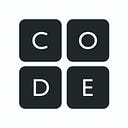5 questions with author and STEM activist Sasha Alston
In honor of Women’s History Month, we’re profiling women in technology throughout the month of March. We hope sharing these stories will encourage girls and young women to start or continue studying computer science!
You might recognize Sasha’s name from her groundbreaking STEM-focused children’s book, “Sasha Savvy Loves to Code.” Published in 2017, the book tells the story of a 10-year-old African-American girl who decides to take a chance on a computer science summer camp, and the rest is history! Her second book in the series, “Sasha Savvy Starts it Up,” focuses on entrepreneurship.
Sasha is also a keynote speaker who encourages youth to explore educational and career opportunities in STEM. She graduated in 2020 with a degree in Information Systems from Pace University’s Lubin School of Business. Let’s hear from Sasha!
Can you tell us where you work and what you do in your current role?
Currently, I work at a global advertising agency based in New York City as an Assistant Account Executive for a major beauty skincare brand. In this role, I manage everything between our creative team and the client. I work with my team on social media content, analyze data, provide digital/web updates, and maintain budgets and timelines for projects. I also write a weekly blog on the latest beauty industry news. Understanding that tech can be applied to all industries expanded my job opportunities.
How did you first become interested in computer science?
The first time I became interested in computer science was during my first internship at the Microsoft office based in Chevy Chase, MD. I was a Marketing Manager for my team where we built two gaming apps. I created and managed the social media accounts, wrote weekly blogs and designed our website. Having this internship helped me understand how marketing and technology coincide. The skills that I learned are now reflected in my current job position.
What barriers, if any, did you encounter on your journey learning computer science? What barriers, if any, do you still encounter in the workplace?
In the tech and advertising industries, there is a lack of diversity. In my computer science classes, I was one of the only black girls there and at times it was discouraging. Coding can be challenging, so it’s best to connect with your peers to go over projects together. This was easier at the college I attended during my freshman year. Overall, I was able to network and build relationships with others that had the same interests as me.
Being a part of MAIP (Multicultural Advertising Intern Program) last year and reading books, like “The Memo” by Minda Harts and “More Than Enough” by Elaine Welteroth, helped me understand how to navigate all spaces as a black woman joining the workforce. With my current role, I make sure to include black-owned or small beauty businesses in my weekly blog to show inclusivity. I am committed to ensuring that everyone is represented.
Can you tell us about someone (or a group or organization) who encouraged you to study computer science?
There wasn’t someone specifically that encouraged me to pursue computer science but I attended a STEM- based high school in Washington, DC that exposed me to coding. Having great role models like Bozoma Saint John [the chief marketing officer at Netflix] motivates me.
Do you have any advice for girls or young women who want to start learning computer science?
You always want to learn and absorb information from those around you especially when it comes to learning how to code. This will help you realize that you are not alone in your journey and that you can be social and have fun too. Also, look for ways to be creative and solve problems to make things better.
Thank you, Sasha! Stay tuned for the next installment of our Women’s History Month “5 questions with” series coming next week. You can read our previous interview with Adafruit’s Limor Fried here or Google’s Sanaz Ahari Lemelson here.
Find more resources for inspiring girls and young women to learn computer science here.
-Kirsten O’Brien, Code.org
